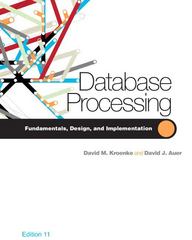Question
1.Assume that machines A and B are on the same network 10.3.2.0/24. Machine A sends out spoofed packets, and Machine B tries to sniff on
1.Assume that machines A and B are on the same network 10.3.2.0/24. Machine A sends out spoofed packets, and Machine B tries to sniff on the network. When Machine A spoofs packets with a destination 1.2.3.4, B can always observe the spoofed packets. However, when Machine A tries to spoof packets with a destination IP address 10.3.2.30, B cannot see the spoofed packets. There is nothing wrong with the spoofing or sniffing program. Apparently, the spoofed packet has never been sent out. What could be the reason? 2. Probabilistic Packet Marking is used in a network. Node B received 20 packets with the same source IP address, which is 10.3.2.30. Among them, 11 packets have IP address 10.0.2.24 in the marking field, 5 packets have IP 64.3.0.18 in that field, and 4 packets have no information there. Can you tell whether they are spoofed packets? If among them, ten packets with 12.0.2.24, six packets with 8.9.0.1, three packets with 1.2.3.4, and one packet with 33.24.11.7, can you tell whether they are spoofed packets? Bob thinks that using a lower overwrite probability, say, 30% instead of 50%, this technique can support IP Traceback with more intermediate routers. Do you agree with him? Why?
Step by Step Solution
There are 3 Steps involved in it
Step: 1

Get Instant Access to Expert-Tailored Solutions
See step-by-step solutions with expert insights and AI powered tools for academic success
Step: 2

Step: 3

Ace Your Homework with AI
Get the answers you need in no time with our AI-driven, step-by-step assistance
Get Started


